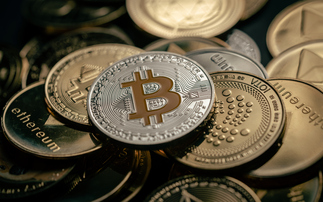Asset allocators are increasing their weighting to gold in reaction to the increasingly dovish Federal Reserve seen in recent months, while the precious metal's diversification benefits and hedging also hold appeal.
Gold staged a comeback in Q4 2018 after speculative positioning fell to its lowest level since 2001 earlier in the year, according to WisdomTree Europe.
Following the 'Red October' global market sell-off, with volatility continuing into the remainder of Q4, the S&P 500 and Brent Crude plummeted 14% and 35% respectively, but gold jumped 7.7% finishing the year at $1,278 an ounce.
Investors have subsequently moved on from expecting more rate hikes from the Federal Reserve after the Federal Open Markets Committee (FOMC) unleashed a more dovish tone and paused rate increases in January.
As a result, gold rallied further to break through the $1,300 mark on 24 January with industry commentators expecting this to continue amid concerns around geopolitical risk and a slowdown in China.
Dovish Fed
Paul Warner, senior portfolio manager at MitonOptimal, who has 5% of his portfolio invested in a physical gold ETF, said the Fed's signal to put interest rate hikes on ice was a key factor in the precious metal moving higher.
Fed chair Jerome Powell indicated rate hikes were on hold due to slower growth in major markets, including China, and heightened uncertainty around government policies following the FOMC meeting on 30 January.
Greater flexibility on reducing the size of the Fed balance sheet was also signalled, shocking investors with its sharp contrast to the more hawkish outlook at the end of last year.
'This will come home to roost': Warning investors not prepared for QT impact
Warner said this would weaken the US dollar, which is positive for gold, adding if the central bank stopped reducing its $4.2trn balance sheet that would be a further boost to the precious metal.
"That is ignoring all the other things that could happen such as the Italy crisis, so the gold insurance element is still in play due to the macro and geopolitical issues around," he said.
Improving sentiment
Furthermore, by the end of 2018, central bank purchases rose to their highest level in almost half a century, driven by heightened geopolitical and economic uncertainty, according to The World Gold Council.
Purchases rose 74% to 651.5 tonnes in 2018, its highest level of net purchases since the suspension of US dollar convertibility into gold in 1971, and the second highest annual total on record.
The report said: "Despite a decade passing since the Global Financial Crisis, times seem no less certain. Central banks reacted to rising macroeconomic and geopolitical pressures by bolstering their gold reserves."
Investors turn to gold amid stockmarket volatility
Nitesh Shah, director, research at WisdomTree Europe, predicted gold to rise to $1,370 an ounce by the end of the year.
He noted the last time speculative positioning was at 2018 lows was in 2001, when an Argentinian debt crisis was brewing and an overvalued technology sector was imploding. In 2002, gold prices rose 25%, he added.
"We believe gold prices will end the forecast period higher mainly as a result of sentiment towards gold continuing to move out of a depressed state," Shah continued.
"This process had started already in the final week of 2018 as most markets displayed excessive volatility."
















